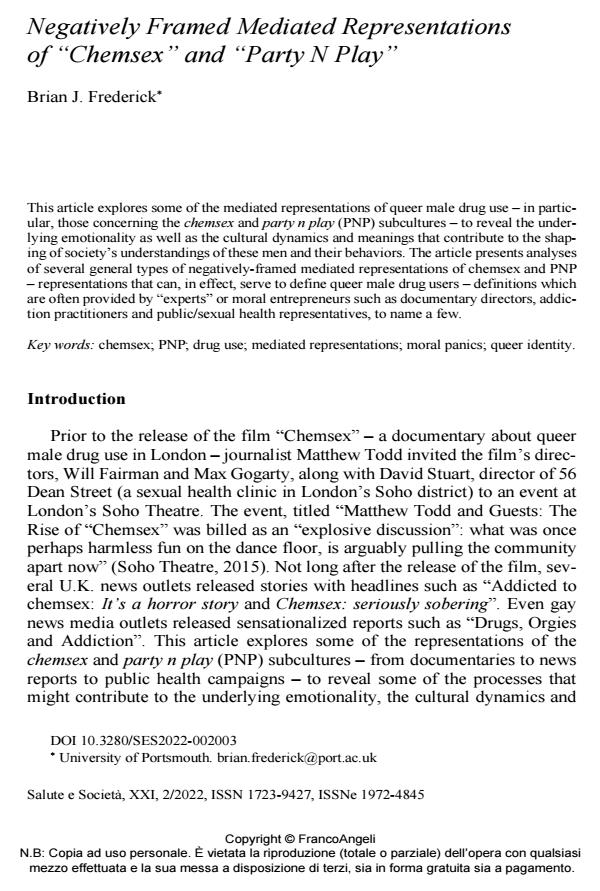Negatively Framed Mediated Representations of "Chemsex" and "Party N Play"
Titolo Rivista SALUTE E SOCIETÀ
Autori/Curatori Brian J. Frederick
Anno di pubblicazione 2022 Fascicolo 2022/2
Lingua Inglese Numero pagine 13 P. 23-35 Dimensione file 87 KB
DOI 10.3280/SES2022-002003
Il DOI è il codice a barre della proprietà intellettuale: per saperne di più
clicca qui
Qui sotto puoi vedere in anteprima la prima pagina di questo articolo.
Se questo articolo ti interessa, lo puoi acquistare (e scaricare in formato pdf) seguendo le facili indicazioni per acquistare il download credit. Acquista Download Credits per scaricare questo Articolo in formato PDF

FrancoAngeli è membro della Publishers International Linking Association, Inc (PILA)associazione indipendente e non profit per facilitare (attraverso i servizi tecnologici implementati da CrossRef.org) l’accesso degli studiosi ai contenuti digitali nelle pubblicazioni professionali e scientifiche
This article explores some of the mediated representations of queer male drug use - in particular, those concerning the chemsex and party n play (PNP) subcultures - to reveal the underly-ing emotionality as well as the cultural dynamics and meanings that contribute to the shaping of society’s understandings of these men and their behaviors. The article presents analyses of several general types of negatively-framed mediated representations of chemsex and PNP - representations that can, in effect, serve to define queer male drug users - definitions which are often provided by "experts" or moral entrepreneurs such as documentary directors, addiction practitioners and public/sexual health representatives, to name a few.
Parole chiave:chemsex; PNP; drug use; mediated representations; moral panics; queer identity.
- Performing identity and risk: chemsex, misogyny, and algorithmic exclusion in queer Reddit spaces Sezai Tunca, in Addictive Behaviors 108582/2026 pp.108582
DOI: 10.1016/j.addbeh.2025.108582
Brian J. Frederick, Negatively Framed Mediated Representations of "Chemsex" and "Party N Play" in "SALUTE E SOCIETÀ" 2/2022, pp 23-35, DOI: 10.3280/SES2022-002003